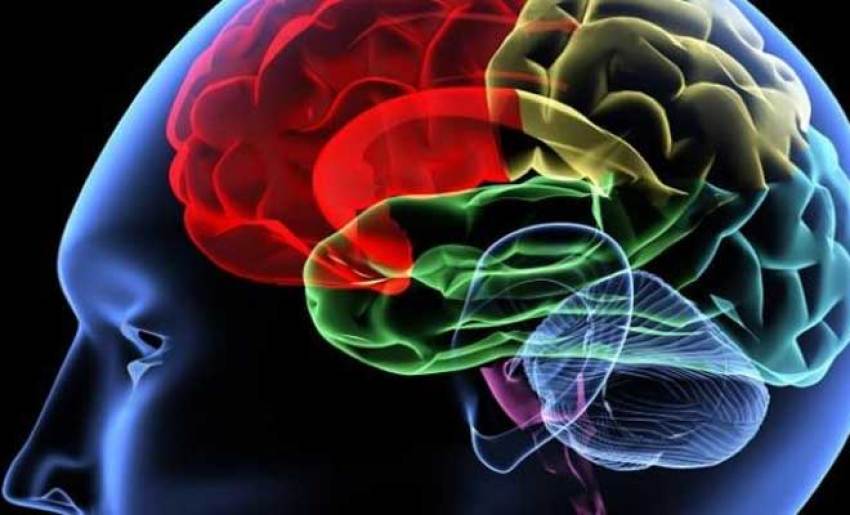Study Showing Brains Differ for Gender Dysphoria Doesn't Prove Transgenderism Innate, Experts Say

A new study finds that certain brain activity of individuals who believe they are the opposite sex mirrors that of the gender they would like to embrace. But experts say the study doesn't show whether the brain differences are innate or due to the choices and life experiences of those with gender dysphoria.
Additionally, the study conflicts with other supposedly pro-transgender studies that purport to show there is no such thing as male and female brain differences.
In the future, those questioning their gender might be offered brain scans to determine whether they are experiencing gender dysphoria, if the findings hold.
The Telegraph reported May 22 that analysis of approximately 160 participants showed that biological males with gender dysphoria, "had a brain structure and neurological patterns similar to biological females, and vice versa" and that those neurological differences are detectable during childhood.
The findings of the study were presented at the annual meeting of the European Society of Endocrinology annual meeting in Barcelona, Spain.
Scientists behind the new research say their discovery promises doctors a new tool with which to offer better advice at an earlier stage. At present the debate remains hotly contested as to how children suffering from gender confusion should be treated psychologically and medically, particularly the prescribing of puberty blockers and cross-sex hormones.

The team of researchers employed MRI tests to examine brain activation upon being exposed to a steroid, in addition to measuring gray matter and white matter microstructure using a technique called "diffusion tensor imaging," the Telegraph reported. The study featured biological males and females with gender dysphoria, and male and females without gender dysphoria as controls, with ages ranging across childhood and adolescence.
Medical doctors who spoke with The Christian Post found some of the Telegraph's seeming conclusions premature.
"Despite the claims of this recent study, a single MRI scan cannot be used to diagnose 'transgenderism,'" said Dr. Michelle Cretella, president of American College of Pediatricians, in a recent interview with CP.
"The fundamental problem is that a brain 'difference' detected at a single point in time cannot establish causation because thinking and behavior are known to alter brain anatomy, activity and function. This process is known as neuroplasticity."
Professor Julie Bakker, who led the research at the University of Liège in Belgium, said: "Although more research is needed, we now have evidence that sexual differentiation of the brain differs in young people with [gender dysphoria], as they show functional brain characteristics that are typical of their desired gender."
"We will then be better equipped to support these young people, instead of just sending them to a psychiatrist and hoping that their distress will disappear spontaneously."
The study comes amid intensifying debate over the Gender Recognition Act in the United Kingdom, which Prime Minister Theresa May has promised to amend in order to allow people to change gender legally without medical authorization.
May said last year that "being trans is not an illness and it should not be treated as such."
Cretella stressed that "all trans brain studies to date, this one included, fail to disprove what is most probable: believing one is trans and behaving trans changes the individual's brain appearance and function."
"To prove that there is a 'trans brain' scientists would need to take MRIs of a set of thousands of randomly selected, nationally representative infants at birth and then serially into young adulthood in order to identify an unchanging brain difference across the subjects' lifespan that is present ONLY in trans identifying young adults."
Likewise, Dr. Martin Bednar, a neurosurgeon and neuroscientist shared his analysis with CP.
"From my review of the abstract and various news releases, it is clear that this is an MRI cross-sectional study, i.e. one point in time rather than a longitudinal study (multiple MRIs over a period of time in the same individual) to determine if there are changes over time, e.g., from birth to the point where gender dysphoria was clearly expressed by an individual," Bednar wrote.
"Without such a longitudinal study — and rigorous confirmation of the data — it is completely unclear (1) if the results are accurate and (2) if regional brain differences can be confirmed, are these differences related to inherent and immutable fundamental biological differences or simply a consequence of brain plasticity that is invariably associated with and is a consequence of a particular way of thinking or acting as has been published multiple times."
He elaborated further, using an example of taxicab drivers in London who have "the knowledge" — an understanding of the spatial layout of the city. It turns out that these taxicab drivers exhibit a strong relationship between the volume of their posterior hippocampus (a critical brain region for memory) and the amount of time that they have been a taxicab driver.
"Are we to assume that certain individuals were born to become taxicab drivers or is it much more logical to conclude that their brains continue to change over time as they accumulated more knowledge and experience of London's complicated grid?" Bednar asked.
"It is clear that these changes in brain structure and function can occur very rapidly and dramatically".
"There is also the case of two groups of young adults, one of which practiced juggling three balls for 60 seconds and a second group that did not. Although their brain volumes were very similar prior to this activity, the group that practiced juggling for three months demonstrated a significant increase in brain volume in two areas of the brain that are important for processing information related to moving objects."
The scientific literature reveals that three months after completion of this activity, the cohort of jugglers quickly saw a 50% reduction in the increased brain volume that was associated with the juggling activity. These studies and numerous others highlight the extreme plasticity of the brain, particularly in the young where brain volumes and activity can be easily affected by activities or behavior, he said.
"The MRI study led by Bakker simply adds confusion rather than clarity to the field. A contemporary brain MRI study released in March by the University of São Paulo's Medical School was also cited in recent press releases as supporting the conclusions of Bakker. There are a number of fundamental flaws in that study as well, but it's important to point out that the São Paulo study is touted as having findings similar to those of Bakker in demonstrating differences in the insula region of the brains of trans and cis-gender people. Interestingly, none of the four brain regions noted in the Bakker study were noted in the São Paulo study. In reading the Bakker abstract, there is no rationale for the study of the two brain regions mentioned (two different brain regions in cis-gender boys and cis-gender girls) — were these areas preselected or simply found to be different in a post study analysis?
"There is also a brain MRI study (also cross-sectional) published in 2015 with the title 'Sex beyond the genitalia: The human brain mosaic'. It attracted a lot of attention at the time in concluding that 'human brains do not belong to one of two distinct categories: male brain/female brain'. So now we have studies emphasizing differences in various brain regions that simply don't confirm the findings of other investigators as well as studies that say that the brain regional anatomy is a 'mosaic' that cannot be described as male or female!"
Bednar expressed further concern regarding the flawed Bakker study and its conclusions, pointing to an Inverse news release wherein Bakker states that "the earlier one can start with the treatment, including puberty inhibition with GnRH agonists then followed by cross-sex hormones, the better the outcome."
Bednar added: "It would be of interest to conduct an MRI study — structural and functional, conducted in a rigorous manner — in which individuals with gender dysphoria were given psychotherapy and the results compared from individuals who continue to exhibit gender dysphoria and those who no longer did."
"Unfortunately, the use of psychotherapy has been outlawed in many regions for boys and girls with gender dysphoria, although the use of steroids which render these boys and girls sterile and at great risk for other medical complications are routinely used and encouraged by society."
The press release notes that it is Bakker's "intention for this research to help the transgender community." "While the stated goal is indeed laudatory," Bednar comments, "the transgender community and science in general would be better served by enhancing the rigor of future studies, including longitudinal, hypothesis-testing study designs that would actually begin to enable conclusions to be made."


























